Water and energy are the two most fundamental ingredients of modern civilization. The water-energy nexus is the relationship between how much water is evaporated to generate and transmit energy, and how much energy it takes to collect, clean, move, store, and dispose of water. Without water, people die. Without energy, we cannot grow food, run computers, or power homes, schools, or offices. As the world’s population grows in number and affluence, the demands for both resources are increasing faster than ever.
The Water-Energy Connection
Energy production is the second largest consumer of water, the first being agriculture. Electric power plants that are fueled by oil, coal, natural gas, or nuclear power require exorbitant amounts of water to cool them, and hydropower plants require water to create energy. Likewise, a significant amount of energy is used in the pumping, treatment, and distribution of water, as well as in the collection, treatment, and disposal of wastewater. In addition, the extraction of fossil fuels used for heating and cooling homes also requires vast amounts of water. Clearly, the relationship between energy and water is inexorably intertwined.

As the population and affluence of the nation continues to increase, so does the demand for both water and energy. Also, climate change has been responsible for increasingly frequent water shortages, requiring communities to find water elsewhere – which requires even more energy. Pumping water from distant areas or glacial icecaps, desalinating ocean water, and highly treating wastewater to potable standards all require exorbitant amounts of energy. Previously, these methods for obtaining potable water were ignored due to their high energy usage. But as water shortages and drought continue to plague the nation, even affecting the historically wet northeast part of the country, more creative ways of meeting the nation’s demand for water must be innovated and implemented.
Likewise, fossil fuels such as oil and gas are being withdrawn at an unsustainable rate, and supplies are dwindling. As these inexpensive energy sources are depleted, our dependence on alternate, more water-intensive sources of energy increases. This endless cycle of water-energy usage has the potential to spiral out of control, and the only way to make a real and lasting change is for policy makers, businesses, and communities to join forces in the planning, management, and conservation of resources and in the innovation of sustainable solutions.
Planning and Management
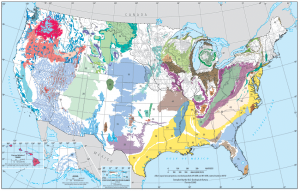
One of the key factors to a sustainable future is communication. In the United States, there is little overlap in governmental agencies when it comes to water and energy. The Department of Energy has been an entity since 1977, and yet our nation still does not have an agency dedicated solely to water planning. While the EPA oversees water quality and the U.S. Geological Survey collects and interprets data related to supply, there is no single federal agency that ensures the effective use of water. In fact, much of the onus of water management lies not with the federal government, but with state agencies and municipalities. This can prove problematic when aquifers or watersheds span multiple cities and town, or even states. A logical approach to water management would be a federal agency that oversees all aspects of water management, from quality to supply to usage. In this way, federal energy and water agencies could collaborate to help forge a sustainable future. For example, when a new power plant is proposed, discussions should take place on not only the siting and permitting of the new facility, but also the effect on air and water quality, as well as water usage and potential for scarcity. In this way, more focused attention on the usage and effects of both energy and water will lead to more holistic — and sustainable — installations.
Value and Conservation
One of the greatest concerns of the modern day American is the risk of running out of inexpensive oil. The cost of oil pushed gasoline prices to $4.48 per gallon in 2008, and was partially responsible for the great recession of 2009. Realizing that the end of cheap oil could spell economic disaster, many people have begun to look at alternate heating sources for their homes, and alternate means to power their vehicles, such as biofuels or electricity. But how much more disastrous would it be to run out of cheap water? Peak oil would admittedly cause economic difficulty as well as some amount of human hardship, but peak water has the potential to cause far direr consequences. Millions of people globally already die from lack of access to an improved water source, and peak water would increase that number exponentially.

It is critical that the value of water be realized if we are to start making real changes. Gasoline prices are currently around $2.20 per gallon, while a gallon of municipal water costs less than one penny. And yet, we can live without gasoline – we cannot live without water. As society begins to understand that procuring, treating, and distributing water is an expensive task and that supplies are limited, we can innovate technologies that reduce the amount of freshwater that we use. For example, in the western part of the country, the Ogallala aquifer is being depleted at a rate far higher than it is being replenished, and irrigation accounts for 94% of the groundwater withdrawals in that area. Switching to a more water efficient irrigation process such as drip irrigation rather than spray would save a significant amount of water. Also, utilizing reclaimed water for crop irrigation, cooling power plants, and industry would greatly reduce our groundwater withdrawals. Even at the residential level, conservation is important. Community outreach programs and educational materials can be used to teach residents how they can save water in their homes and businesses. Simple, low-cost initiatives such as mowing grass to a higher level, utilizing rain barrels, and planting native trees and plants can have a huge impact when implemented on a large scale.
And let’s not forget about energy. Energy conservation is directly linked to water conservation, and it is critical that saving energy happen at both the industrial and residential levels. All businesses should examine their energy efficiency and implement energy-saving initiatives. And businesses that utilize a lot of water, such as hospitals and hotels, should conduct water audits to examine and modify their water usage. Wastewater treatment should include technologies that create energy from waste, such as anaerobic digestion, in order to offset the energy used in treatment processes. Likewise, homeowners should be educated on the importance of saving energy. Utilizing energy efficient lighting, turning the heat down by a degree or two, and unplugging appliances, computers, and chargers that are not in use are just a few of the ways that the individual American can save energy. In addition, heating residential water uses a significant amount of energy, while solar water heating is a simple technology that is as inexpensive as it is effective and efficient. Unfortunately, it has not received any type of federal backing or media attention, and remains relatively unknown. Both education and policy are critical to the widespread implementation of energy saving initiatives.
In Conclusion
Energy and water are both precious resources that are critical to our health, our economy, and our way of life — and they are inextricably linked. Of the utmost importance is that we value water. Until water has a realistic price on it, as energy does, it will be seen as a resource that can be used and wasted at free will. Only with accurate pricing can the link between water and energy be made apparent to consumers, and that conserving water conserves energy, and vice versa. Likewise, with true pricing consumers would see that as the price of water increases, so does the price of energy, and that as the price of energy increases, so does the price of water. Feeling the effects in our pockets would increase the appearance of value, act as a strong motivator to more aggressive conservation, and would prompt the innovation and implementation of more efficient, green solutions.


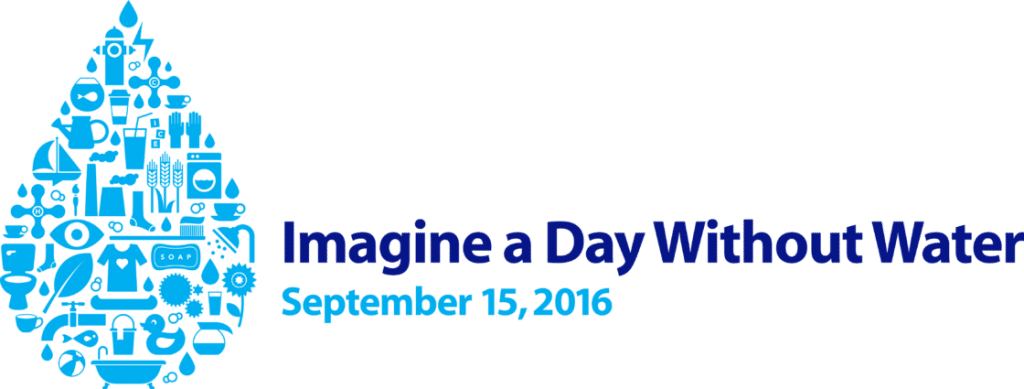
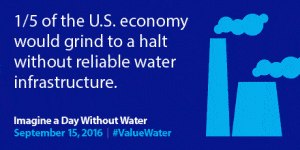 Imagine a day without water. Nearly every single thing we do is reliant on water. Right at the start of our day, we would not be able to use the bathroom, take a shower, brush our teeth, or make a cup of coffee. There would be no cleaning dishes, mopping floors, or cooking food. Water is something we use constantly throughout the day without even thinking about it, and has therefore become something we take for granted. For that reason, Imagine a Day Without Water was first introduced in 2015 in order to bring awareness to the value of water.
Imagine a day without water. Nearly every single thing we do is reliant on water. Right at the start of our day, we would not be able to use the bathroom, take a shower, brush our teeth, or make a cup of coffee. There would be no cleaning dishes, mopping floors, or cooking food. Water is something we use constantly throughout the day without even thinking about it, and has therefore become something we take for granted. For that reason, Imagine a Day Without Water was first introduced in 2015 in order to bring awareness to the value of water.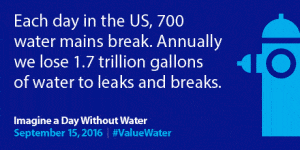 Think about the way water enters our homes and businesses, and of how our wastewater leaves it. There are literally thousands of pipes underground that we never see, and many of these pipes are approaching the end of their useful life. After all, most of our infrastructure was built around the time of World War II, and is now over 70 years old. In fact, much of the infrastructure in New England is well over 100 years old. These pipes and treatment plants are in desperate need of repair and replacement. In addition, our drinking water is treated to meet increasingly stringent regulations that protect our health. Bacteria, toxins, metals, and other harmful substances are all removed from the water prior to it entering the distribution system, and this treatment is expensive. In the same way, the wastewater that leaves our homes and businesses is highly treated and cleaned before it is returned to the environment, protecting public health from the myriad toxins and diseases found in untreated wastewater.
Think about the way water enters our homes and businesses, and of how our wastewater leaves it. There are literally thousands of pipes underground that we never see, and many of these pipes are approaching the end of their useful life. After all, most of our infrastructure was built around the time of World War II, and is now over 70 years old. In fact, much of the infrastructure in New England is well over 100 years old. These pipes and treatment plants are in desperate need of repair and replacement. In addition, our drinking water is treated to meet increasingly stringent regulations that protect our health. Bacteria, toxins, metals, and other harmful substances are all removed from the water prior to it entering the distribution system, and this treatment is expensive. In the same way, the wastewater that leaves our homes and businesses is highly treated and cleaned before it is returned to the environment, protecting public health from the myriad toxins and diseases found in untreated wastewater.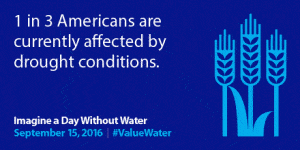 Another challenge faced by utilities today is our growing national population combined with historic drought and climate change. This increased demand in the wake of a dwindling supply is placing extra pressure on our water and wastewater systems, and requires thoughtful, long-term solutions if we are going to be able to meet current and future demands. Add to that the recent focus on our nation’s lead service lines and the fact that they absolutely need to be replaced, and it becomes clear that our water and wastewater systems are in desperate need of attention — and investment.
Another challenge faced by utilities today is our growing national population combined with historic drought and climate change. This increased demand in the wake of a dwindling supply is placing extra pressure on our water and wastewater systems, and requires thoughtful, long-term solutions if we are going to be able to meet current and future demands. Add to that the recent focus on our nation’s lead service lines and the fact that they absolutely need to be replaced, and it becomes clear that our water and wastewater systems are in desperate need of attention — and investment.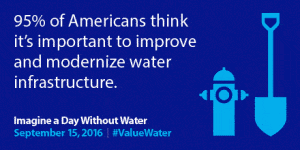 We have reached the point where we must proactively address and invest in our nation’s water and wastewater infrastructure — before it is too late. Imagine a Day Without Water is a day in which we can all spread the word about the value of water by encouraging friends, family, and colleagues to imagine what their lives would be like without water. With proper planning and smart investment from both consumers and our legislators, living without water is something that will never come to fruition in our nation. Join the movement today by participating in Imagine a Day Without Water. For the many no-cost ways in which you can participate, including signing a petition, joining a Thunderclap, and becoming involved on social media, please visit
We have reached the point where we must proactively address and invest in our nation’s water and wastewater infrastructure — before it is too late. Imagine a Day Without Water is a day in which we can all spread the word about the value of water by encouraging friends, family, and colleagues to imagine what their lives would be like without water. With proper planning and smart investment from both consumers and our legislators, living without water is something that will never come to fruition in our nation. Join the movement today by participating in Imagine a Day Without Water. For the many no-cost ways in which you can participate, including signing a petition, joining a Thunderclap, and becoming involved on social media, please visit 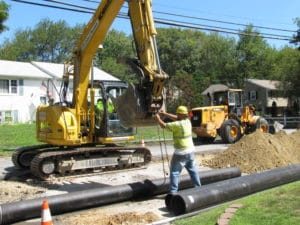
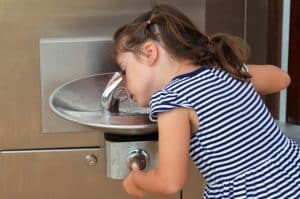 While utilities are working diligently to keep our nation’s water lead-free, public schools have recently come under fire, as schools from cities across the nation — including Boston, Massachusetts; Ithaca, New York; Portland, Oregon; and Tacoma, Washington — have found lead in their drinking water above the EPA’s action level of 15 parts per billion. Surprisingly, this contamination is the result of a legal loophole that many states are looking to close: schools are mandated by the EPA to be connected to a water supply that is regularly tested for lead and other contaminants; however, these utilities are not typically required to actually test the water inside the schools themselves. Considering that the average age of a school in the United States is 44 years old, it should come as no surprise that there are elevated levels of lead in the drinking water of public schools. After all, lead pipes were legal until about 30 years ago, and faucets and fixtures were allowed to contain up to 8% lead until 2014.
While utilities are working diligently to keep our nation’s water lead-free, public schools have recently come under fire, as schools from cities across the nation — including Boston, Massachusetts; Ithaca, New York; Portland, Oregon; and Tacoma, Washington — have found lead in their drinking water above the EPA’s action level of 15 parts per billion. Surprisingly, this contamination is the result of a legal loophole that many states are looking to close: schools are mandated by the EPA to be connected to a water supply that is regularly tested for lead and other contaminants; however, these utilities are not typically required to actually test the water inside the schools themselves. Considering that the average age of a school in the United States is 44 years old, it should come as no surprise that there are elevated levels of lead in the drinking water of public schools. After all, lead pipes were legal until about 30 years ago, and faucets and fixtures were allowed to contain up to 8% lead until 2014.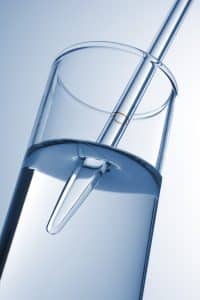 Many states have introduced legislation this year that would require public schools to regularly test their water. Bills on the table in Michigan, New Jersey, North Carolina, and Rhode Island would require regular testing, as would a New York bill that takes it one step further by providing funding for said testing. In addition, the New York bill would require schools to notify parents and to provide an alternate supply of safe drinking water to students if elevated lead levels are found. In Massachusetts, all community water systems are required by Massachusetts drinking water regulations to collect lead and copper samples from at least two schools or early education and care program facilities that they serve in each sampling period, when they collect their Lead and Copper Rule (LCR) samples. In addition, in April of 2016, it was announced that $2 million from the Massachusetts Clean Water Trust (MCWT) will fund cooperative efforts to help Massachusetts public schools test for lead and copper in drinking water. The funds, to be used by the Massachusetts Department of Environmental Protection (MassDEP), will provide technical assistance to ensure that public school districts can sample the taps and water fountains in their schools, and to identify any results that show lead and copper contamination over the action level. On a federal level, legislation has been introduced to Congress that would requires states to assist schools with testing for lead; however, it does not provide funding.
Many states have introduced legislation this year that would require public schools to regularly test their water. Bills on the table in Michigan, New Jersey, North Carolina, and Rhode Island would require regular testing, as would a New York bill that takes it one step further by providing funding for said testing. In addition, the New York bill would require schools to notify parents and to provide an alternate supply of safe drinking water to students if elevated lead levels are found. In Massachusetts, all community water systems are required by Massachusetts drinking water regulations to collect lead and copper samples from at least two schools or early education and care program facilities that they serve in each sampling period, when they collect their Lead and Copper Rule (LCR) samples. In addition, in April of 2016, it was announced that $2 million from the Massachusetts Clean Water Trust (MCWT) will fund cooperative efforts to help Massachusetts public schools test for lead and copper in drinking water. The funds, to be used by the Massachusetts Department of Environmental Protection (MassDEP), will provide technical assistance to ensure that public school districts can sample the taps and water fountains in their schools, and to identify any results that show lead and copper contamination over the action level. On a federal level, legislation has been introduced to Congress that would requires states to assist schools with testing for lead; however, it does not provide funding. World Water Week in Stockholm is an annual event that focuses on global water issues. One of the key aspects of World Water Week is the coming together of industry experts in an effort to brainstorm and develop solutions to the world’s most pressing water-related issues.
World Water Week in Stockholm is an annual event that focuses on global water issues. One of the key aspects of World Water Week is the coming together of industry experts in an effort to brainstorm and develop solutions to the world’s most pressing water-related issues. Agriculture is not only critical to nourishing the global population, it is also far and away the most aggressive consumer of water. In fact, 70% of water withdrawals worldwide are for agriculture. Add to this the fact that by 2050 global agriculture will need to produce 60% more food in order to feed the burgeoning population, and it becomes clear that finding ways to farm sustainably is not only prudent, but necessary. The most sustainable form of agriculture comes in the form of rain fed crops. However, only about half of agriculture that has the potential to be rain fed is currently doing so. The rest is relying on irrigation and water withdrawals. Therefore, a key goal for the future is to convert these irrigated crops into ones that are watered naturally, with rainfall.
Agriculture is not only critical to nourishing the global population, it is also far and away the most aggressive consumer of water. In fact, 70% of water withdrawals worldwide are for agriculture. Add to this the fact that by 2050 global agriculture will need to produce 60% more food in order to feed the burgeoning population, and it becomes clear that finding ways to farm sustainably is not only prudent, but necessary. The most sustainable form of agriculture comes in the form of rain fed crops. However, only about half of agriculture that has the potential to be rain fed is currently doing so. The rest is relying on irrigation and water withdrawals. Therefore, a key goal for the future is to convert these irrigated crops into ones that are watered naturally, with rainfall.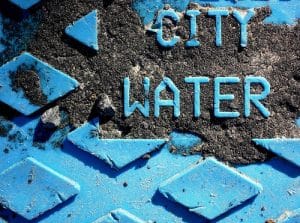 Domestic usage only accounts for 10% of total water demand, but its impacts are arguably the most important. Lack of improved water and sanitation is one of the largest contributors to poverty, illness, and lack of education worldwide. Even with the incredible strides made in the United Nation’s goal to provide improved water and sanitation to all people, an estimated 748 million people still lack access to an improved source of water and 2.5 billion still lack access to improved sanitation. One of the key goals of water for sustainable growth is finding ways in which to unequivocally ensure safe, clean water and hygienic, private sanitation to all inhabitants on the planet.
Domestic usage only accounts for 10% of total water demand, but its impacts are arguably the most important. Lack of improved water and sanitation is one of the largest contributors to poverty, illness, and lack of education worldwide. Even with the incredible strides made in the United Nation’s goal to provide improved water and sanitation to all people, an estimated 748 million people still lack access to an improved source of water and 2.5 billion still lack access to improved sanitation. One of the key goals of water for sustainable growth is finding ways in which to unequivocally ensure safe, clean water and hygienic, private sanitation to all inhabitants on the planet.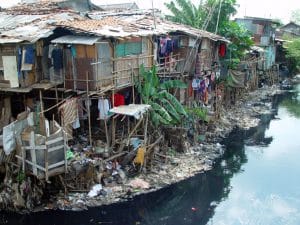 Currently, over half of the global population resides in cities, and that number is expected to increase to over two-thirds of the nine billion global inhabitants by 2050. Most of this increase will happen in developed nations, which will tax infrastructure and likely increase areas of impoverished living conditions. Already in the United States are areas, such as
Currently, over half of the global population resides in cities, and that number is expected to increase to over two-thirds of the nine billion global inhabitants by 2050. Most of this increase will happen in developed nations, which will tax infrastructure and likely increase areas of impoverished living conditions. Already in the United States are areas, such as